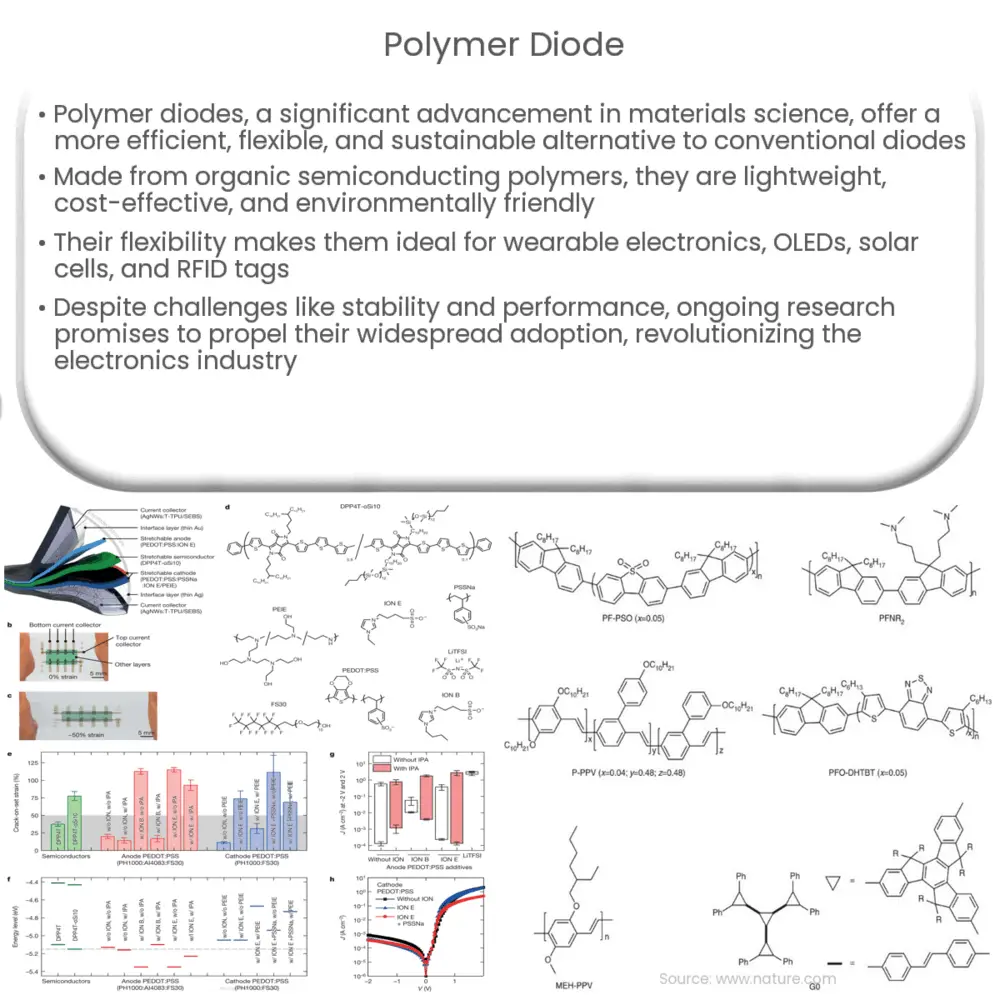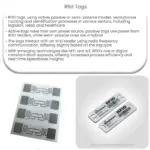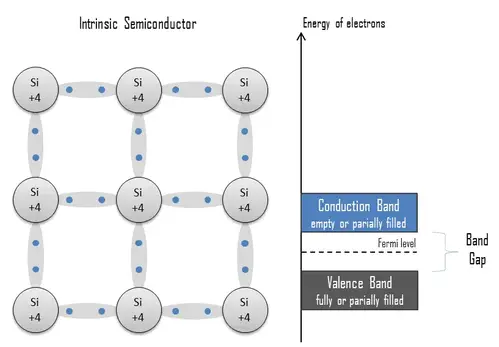Polymer diodes are flexible, lightweight electronic devices utilizing organic semiconductors, offering potential in solar cells, OLEDs, RFID tags, and flexible electronics.

Polymer Diodes: Revolutionizing the Future of Electronics
Introduction
As the world of technology continues to advance, so does the need for faster and more efficient electronic devices. One of the key components in achieving this goal is the development of new materials and components that can facilitate better performance. Polymer diodes, a breakthrough in materials science, are set to revolutionize the electronics industry by offering remarkable advantages over conventional diodes.
What are Polymer Diodes?
Polymer diodes, also known as organic diodes or plastic diodes, are a class of electronic devices that utilize organic semiconducting polymers as their active layer, instead of traditional inorganic semiconductors like silicon. These diodes are constructed by sandwiching an organic polymer layer between two electrodes, one of which is made from a high work function metal and the other from a low work function metal. This unique design allows the diode to operate efficiently with low-power consumption.
Advantages of Polymer Diodes
There are several advantages to using polymer diodes over traditional silicon-based diodes:
- Flexibility: Polymer diodes are made from flexible organic materials, which can be easily bent, folded, or rolled without damaging their electronic properties. This feature makes them ideal for applications such as wearable electronics, flexible displays, and smart textiles.
- Lightweight: Organic polymers are significantly lighter than inorganic semiconductors, making polymer diodes less bulky and easier to integrate into a wide range of electronic devices.
- Low-cost: Polymer diodes can be fabricated using low-cost, solution-based processing techniques, such as inkjet printing and roll-to-roll processing, which significantly reduces the cost of production compared to conventional semiconductor manufacturing methods.
- Environmentally friendly: The materials used in polymer diodes are less toxic and more environmentally friendly than those used in traditional inorganic semiconductors, making them a more sustainable option for electronic devices.
Applications of Polymer Diodes
Polymer diodes are suitable for a variety of applications, thanks to their unique properties. Some of these applications include:
- Solar cells: Polymer diodes have shown great potential for use in organic photovoltaic devices, where they can efficiently convert sunlight into electricity.
- Organic light-emitting diodes (OLEDs): Polymer diodes have been successfully integrated into OLED technology, resulting in improved performance, flexibility, and energy efficiency for display screens and lighting applications.
- RFID tags: Due to their lightweight and flexibility, polymer diodes are ideal for use in RFID tags, which can be attached to various objects for identification and tracking purposes.
- Flexible and stretchable electronics: The flexibility of polymer diodes enables the development of innovative electronic devices, such as flexible sensors and stretchable circuits, that can be integrated into clothing, medical devices, and more.
Challenges and Future Directions
Despite the numerous advantages and potential applications of polymer diodes, there are still challenges that need to be addressed before they can become widely adopted:
- Stability: Organic materials are generally less stable than inorganic semiconductors, and their performance may degrade over time due to exposure to heat, light, or moisture. Researchers are actively working on developing new polymers and encapsulation techniques to improve the stability and longevity of these devices.
- Performance: While polymer diodes offer significant benefits in terms of flexibility, weight, and cost, their performance is still generally lower than that of inorganic semiconductors. Efforts to improve the efficiency, speed, and overall performance of polymer diodes are ongoing and will be crucial for their widespread adoption.
- Standardization: As a relatively new field, the development of standardized fabrication processes and testing methods for polymer diodes is essential for reliable comparison of results and the acceleration of commercialization.
Despite these challenges, the future of polymer diodes is promising. As researchers continue to develop new materials, fabrication techniques, and device designs, it is expected that the performance and stability of polymer diodes will improve significantly. This will open up new possibilities for their use in a wide range of applications, further propelling the growth of the electronics industry.
Conclusion
Polymer diodes represent a significant breakthrough in the field of electronics, offering a flexible, lightweight, and low-cost alternative to traditional silicon-based diodes. Their unique properties make them well-suited for a variety of applications, including solar cells, OLEDs, RFID tags, and flexible electronics. As research and development efforts continue to address the current challenges faced by polymer diodes, their potential for revolutionizing the electronics industry is immense. With the continued advancement of materials science and engineering, the adoption of polymer diodes in various electronic devices will undoubtedly lead to a new era of innovation and sustainability in the world of technology.




